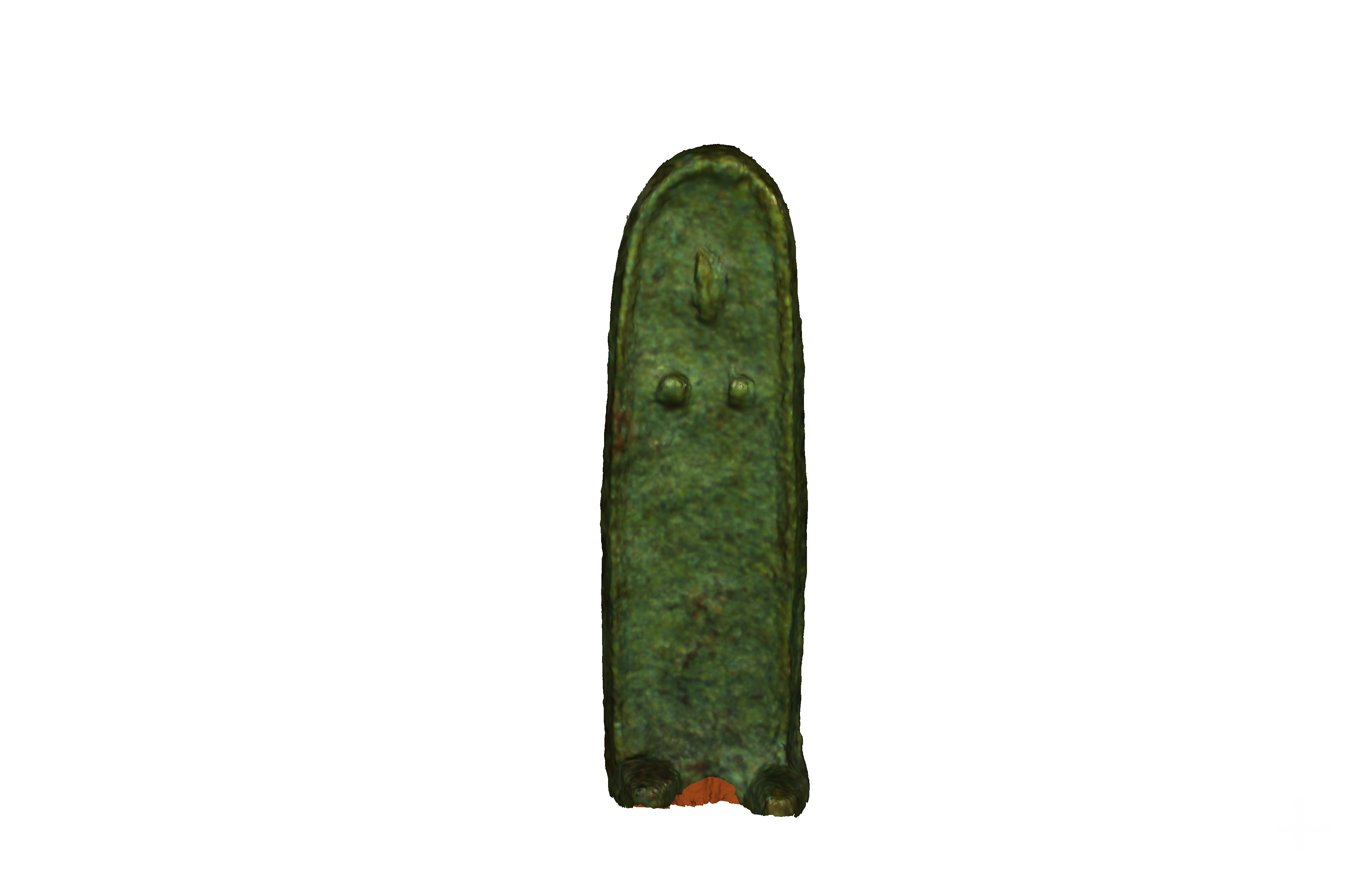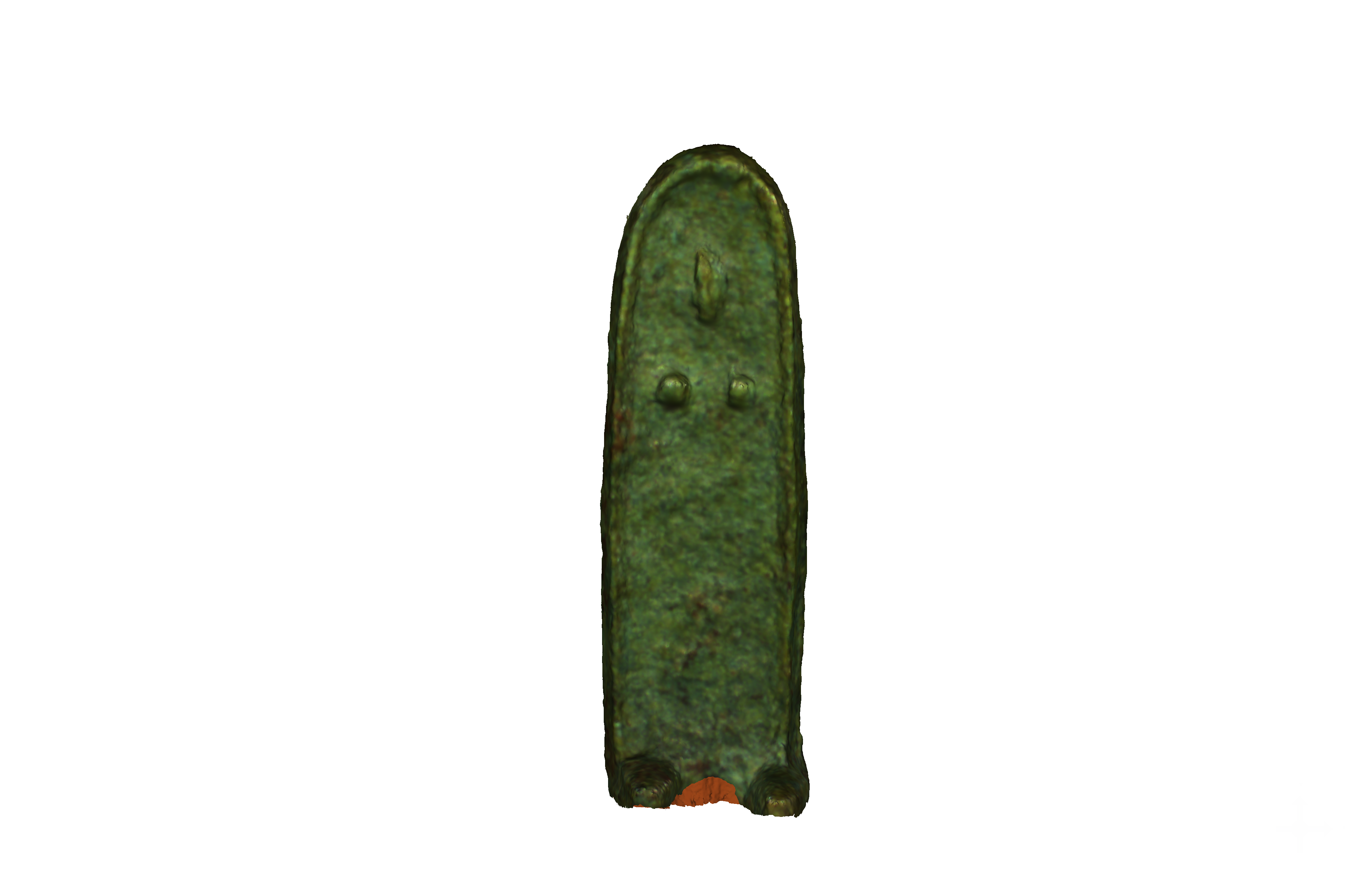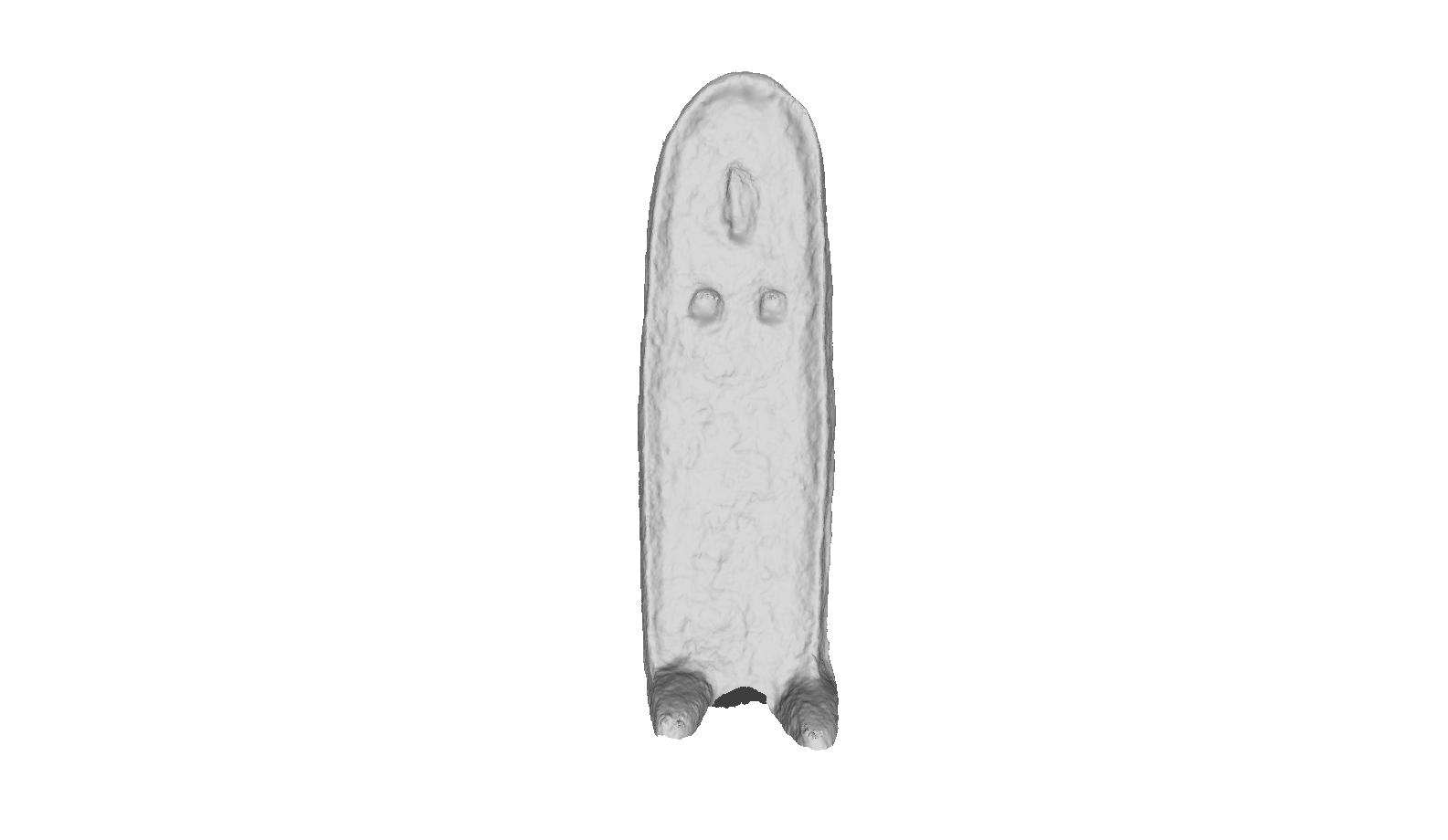Description
Click on the image to go full screen
This small statuette, made using the mould casting technique, is part of a series of bronze objects found in 1913 during an excavation in Via Leonardo Loredan, Padua. This area was originally occupied by a necropolis that counted burials from various periods, from the Venetian to the Roman age.
The bronze statuette has the shape of a stele: flat and with a rounded top, smoothed at the back while the front is more irregular. It represents a female figure facing frontally, covered by a long cloak that leaves her feet uncovered, disproportionate to her body, and with only the outline of her nose and breasts recognisable.
The exceptionality of this figurine, dated to the 4th-3rd century B.C., concerns several aspects: first of all, the fact that it belonged to a private tomb set, when instead the majority of bronze figurines can be traced back to votive deposits, in sacred or ritual contexts. Secondly, the uniqueness of the shapes, so allusive, indicates a precise stylistic choice which has no direct comparisons in the venetic world and should certainly not be mistaken for a primitive form of depiction.


